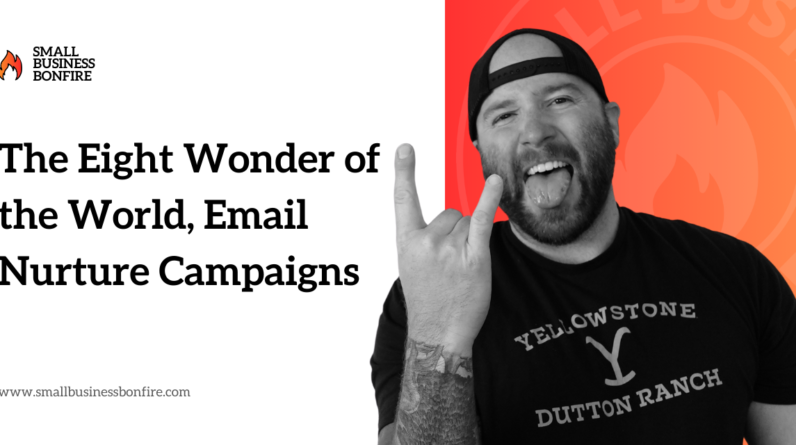
Here’s my step-by-step process for nurturing success.
Step 1: Identify Your Audience
Before creating your nurturing sequence, you must identify your target audience for the campaign.
This includes understanding their needs, wants, challenges, and how your product or service fits into their life.
The more you understand your customer’s pain points, the more targeted your lead magnets and sequence can be.
What does that mean?
A better chance to close them.
When I was running TGA, we targeted attorneys.
Here’s a sample customer persona. Nothing fancy, just a reminder of who you’re targeting.
Step 2: Create Lead Magnets
Creating lead magnets is an essential step in building an effective nurturing sequence.
A lead magnet is an irresistible offer that provides a piece of valuable information to the prospect in exchange for their contact information (email address).
My favorite lead magnets are:
GuidesResource library’sChecklistsTemplateseBooksWebinarsFree trialsFree tools
The key to a successful lead magnet is relevance based on your customer personas.
A guide to building a tiny home is useless to an attorney. Make sure your lead magnets are relevant to a specific audience.
And don’t worry; you can have several lead magnets for different audiences and several sequences to match.
But start with one.
The next step is to promote your lead magnet.
Ensure your lead magnet is easy to find and access on your website.
Utilize every marketing channel at your disposal to reach potential customers.
This could involve organic social media posts, paid advertising, SEO, and email marketing.
Here’s a lead magnet post promoting lead magnets (lead magnet inception).
Pro Tip: The more quality lead magnets you have, the better! Don’t be afraid to provide too much value.
Step 3: Set Up Your Email Sequence
Now, it’s time to set up your email sequence.
A typical sequence might look like this:
Email 1: Welcome and introduce your brandEmail 2: Share valuable content (guide, tools, etc.)Email 3: Address common objections (based on your target audience) Email 4: Offer a low-risk, introductory offer (a discount, perhaps?) Email 5: Share testimonials and success stories (list people you’ve helped).
From there, you can rinse and repeat the sequence.
Create more valuable content, send more testimonials, etc.
How often should you send emails?
I would probably send one a week.
For longer sequences, I might taper off into one every two weeks.
Conduct tests and create a sequence based on the data you collect.
Step 4: Write Compelling Emails
The next step in the process is to write compelling emails.
If you don’t see value in what you’re sending, why would your customers?
Step 4.1: Create a Great Email Subject Line
The subject line is the first thing your audience sees when they receive your email.
It must be compelling enough to incite curiosity and prompt them to open the email.
A few tips to consider: keep it short and sweet (under 50 characters if possible), use action words, and create intrigue.
Example: How We Helped BestBuy 6x Their Inbound Leads
Step 4.2: Craft Valuable Content
The content of your email should provide value to your audience.
The goal is to build trust with your audience and show that you understand and can solve their problems.
Be sure your content aligns with your audience’s needs and interests, and remember, it’s not about selling but providing value.
If you think you’re giving away too much, then you’re on the right track.
Step 4.3: End With a CTA
Your email should always end with a clear call-to-action (CTA).
I’m a huge fan of the “soft sell.”
Try this:
Write at the bottom of each email: “There are a few ways we can help you when you’re ready.”
Then list off your offers & links to buy, sign up, set up a call, etc.
Step 5: Test and Tweak
After launching your campaign, closely monitor the results.
Pay attention to open rates, click-through rates, and conversions.
Use this data to tweak your emails for better performance.
If you notice people are dropping off after the 3rd email, swap it out!
While automation is great, you’ll need to continue to tweak this process as you go.
Email Nurturing Best Practices
In addition to the step-by-step process, there are a few best practices to follow to make your email nurturing campaigns more effective:
Keep Them Semi-Short: While providing value is important, respecting your audience’s time is equally important. Keep your emails semi-short and to the point. Make sure every sentence serves a purpose.Personalize Your Emails: Personalization goes beyond just using the recipient’s name in the email. It’s about making your emails relevant to recipients based on their behavior, interests, and needs. Segment Your List: Not every email will be relevant to every person on your list. You can send more targeted emails by segmenting your list, increasing engagement and conversions. A great way to do this is by creating targeted lead magnets or asking segmentation questions in your first email.







